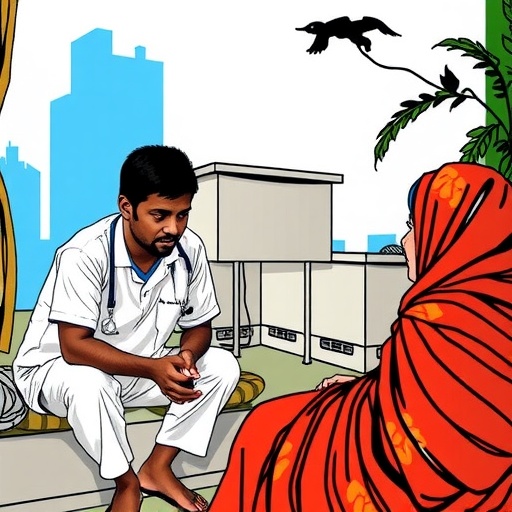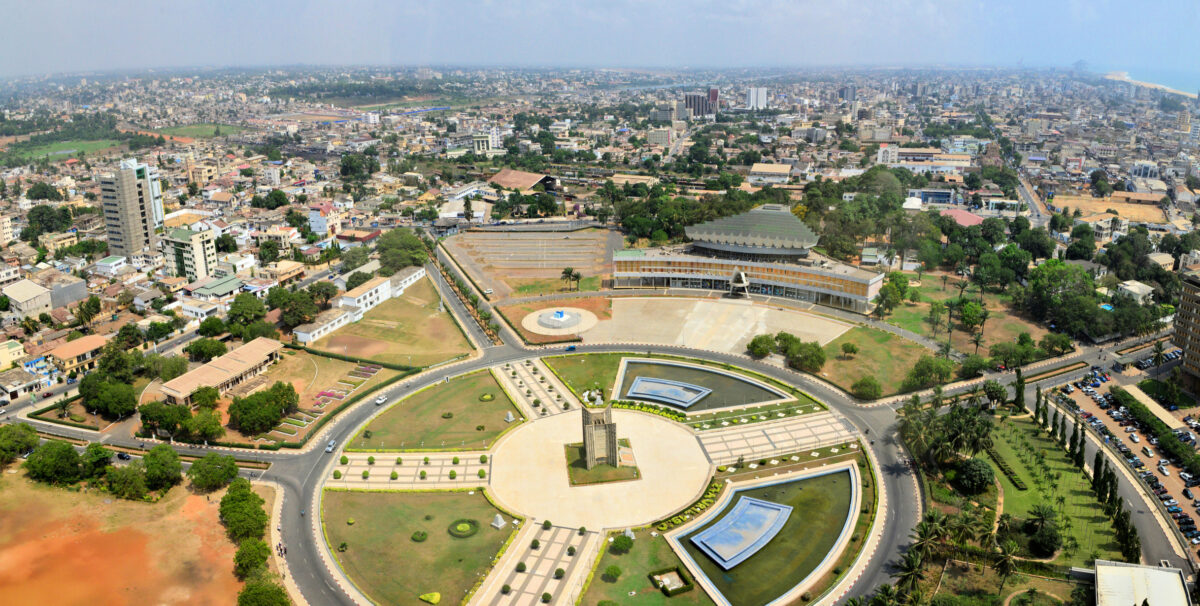Solar import ban may hinder energy access – PWC – Punch Newspapers

Report on Nigeria’s Proposed Solar Panel Import Policy and its Alignment with Sustainable Development Goals
Introduction
A recent report by PricewaterhouseCoopers (PwC), titled “Rethinking Nigeria’s Proposed Solar Panel Import Policy,” provides a critical analysis of the Federal Government’s plan to implement an immediate restriction on solar panel imports. The report cautions that while the policy aims to foster local industry in line with SDG 9 (Industry, Innovation, and Infrastructure), a hasty implementation could severely undermine progress on SDG 7 (Affordable and Clean Energy) and shake investor confidence, thereby impacting SDG 8 (Decent Work and Economic Growth).
Government Policy and Rationale
The Federal Government, through the Ministry of Science and Technology, proposed a policy to restrict solar panel imports. The stated objectives are to:
- Localise production and build domestic manufacturing capacity.
- Conserve foreign exchange (forex).
- Create jobs, contributing to SDG 8.
- Address the influx of substandard products, which relates to SDG 12 (Responsible Consumption and Production).
Import data highlights the scale of reliance on foreign supply, with over four million panels valued at more than $200 million imported in 2023 alone. This underscores the significant gap in local manufacturing capacity.
Analysis of Potential Impacts on Sustainable Development
Risk to SDG 7 (Affordable and Clean Energy)
The primary concern raised by the PwC report is that an immediate import ban would disrupt Nigeria’s fragile energy access gains. A sudden halt in supply could stall the clean energy transition, increase costs for consumers, and compromise the national goal of providing affordable and clean energy for all, potentially leaving millions without power.
Implications for SDG 8 & SDG 9 (Economic Growth and Industrialisation)
While the government’s policy is aligned with the ambition for industrial growth, PwC warns that an improperly sequenced plan could be counterproductive. A hasty restriction risks stalling momentum in the renewable energy sector, reducing affordability, and damaging investor confidence. This would hinder the long-term, sustainable development of local industry and the creation of decent work.
Challenges to SDG 13 (Climate Action)
Slowing the adoption of solar energy would directly impede Nigeria’s ability to meet its climate goals and commitments. A consistent supply of solar components is essential for the country to advance its clean energy transition and contribute effectively to global climate action.
Key Recommendations for a Sustainable and Phased Approach
PwC advocates for a measured and strategic approach to balance industrial policy with energy access goals. The report outlines several key recommendations structured to support multiple SDGs.
1. Phased Policy Implementation
Rather than an outright ban, the report recommends a gradual, sequenced strategy to allow the local market to adapt and grow sustainably.
- Adopt a three- to five-year phased reduction in solar panel imports.
- Implement a tiered strategy that includes import quotas, progressive tariffs, or blended procurement models to ensure supply continuity.
- Develop a stable regulatory framework to attract long-term investment.
2. Strengthening the Local Manufacturing Ecosystem (SDG 9)
To build a competitive local industry, the government must create a more enabling environment.
- Streamline access to existing incentives such as the Pioneer Status Incentive, import duty waivers, and VAT exemptions through single-window applications and clearer eligibility criteria.
- Establish dedicated renewable energy industrial zones with shared infrastructure and proximity to ports to reduce logistics costs.
- Create renewable energy desks in key Ministries, Departments, and Agencies (MDAs) to improve coordination.
3. Human Capital Development (SDG 8)
A successful local industry requires a skilled workforce.
- Partner with universities, polytechnics, and vocational centres to create a national renewable energy skills framework.
- Invest in training for technicians, engineers, and quality assurance professionals to ensure the local industry can compete on quality and innovation.
4. Quality Assurance and Finance (SDG 7 & SDG 12)
Ensuring product quality and financial accessibility is crucial for market sustainability and consumer trust.
- Strengthen enforcement of quality standards by agencies like the Standards Organisation of Nigeria (SON) and the Nigerian Electricity Management Services Agency (NEMSA), aligning with International Electrotechnical Commission (IEC) standards.
- Task the Bank of Industry (BoI) and the Central Bank of Nigeria (CBN) with providing long-term green financing for manufacturers.
- Support Pay-As-You-Go (PAYG) financing models to deepen solar access for off-grid households and support SDG 11 (Sustainable Cities and Communities).
5. Stakeholder Collaboration (SDG 17: Partnerships for the Goals)
A coherent national strategy requires broad-based collaboration.
- Engage the private sector, development partners (e.g., World Bank, AfDB), and civil society to co-develop a comprehensive renewable energy roadmap.
- Establish stakeholder feedback loops and publish annual progress reports to ensure transparency, track job creation, and allow for mid-course corrections.
Conclusion
The PwC report concludes that Nigeria must recalibrate its proposed solar panel import policy. A strategic, sequenced approach that aligns stakeholder interests and realistically assesses current local capacity is essential. Getting this policy right can help Nigeria achieve its climate goals (SDG 13), boost local industry (SDG 9), and drive long-term economic growth (SDG 8). Conversely, a poorly executed policy risks undermining the nation’s progress towards providing affordable and clean energy for all (SDG 7).
1. Which SDGs are addressed or connected to the issues highlighted in the article?
The article on Nigeria’s proposed solar panel import policy touches upon several interconnected Sustainable Development Goals (SDGs). The primary focus on renewable energy, industrial growth, job creation, and climate action links the discussion to the following SDGs:
- SDG 7: Affordable and Clean Energy – This is the most central SDG, as the entire article revolves around solar energy access, affordability, and the transition to clean energy sources in Nigeria.
- SDG 8: Decent Work and Economic Growth – The government’s motivation to “create jobs” and “boost local industry” through local manufacturing of solar panels directly relates to promoting economic growth and employment.
- SDG 9: Industry, Innovation, and Infrastructure – The debate over local manufacturing versus importation, the call for “dedicated renewable energy industrial zones,” and the need to “ramp up production capacity” are core themes of industrialization and infrastructure development.
- SDG 13: Climate Action – The article explicitly mentions that the policy decisions will impact Nigeria’s ability to “meet its climate goals” and advance its “clean energy transition.”
- SDG 17: Partnerships for the Goals – The report’s recommendation to “engage the private sector, development partners like the World Bank and AfDB, and civil society” highlights the importance of multi-stakeholder partnerships to achieve sustainable development.
2. What specific targets under those SDGs can be identified based on the article’s content?
Based on the specific issues and recommendations discussed, the following targets can be identified:
SDG 7: Affordable and Clean Energy
- Target 7.1: By 2030, ensure universal access to affordable, reliable and modern energy services. The article addresses this by discussing how the policy could affect “Nigeria’s fragile energy access gains” and the need to “deepen solar access for off-grid households.”
- Target 7.2: By 2030, increase substantially the share of renewable energy in the global energy mix. The focus on solar panels as a key component of Nigeria’s energy strategy directly supports this target.
- Target 7.a: By 2030, enhance international cooperation to facilitate access to clean energy research and technology… and promote investment in energy infrastructure and clean energy technology. The report’s concern about dampening “investor confidence” and the need to attract “long-term investments under a stable regulatory framework” relates to this target.
SDG 8: Decent Work and Economic Growth
- Target 8.2: Achieve higher levels of economic productivity through diversification, technological upgrading and innovation. The government’s goal to “localise production” of solar panels is a direct attempt to diversify the economy and upgrade its technological capabilities.
- Target 8.3: Promote development-oriented policies that support productive activities, decent job creation, entrepreneurship, creativity and innovation. The entire policy proposal is framed around the goal to “create jobs” and spur “industrial growth.”
SDG 9: Industry, Innovation, and Infrastructure
- Target 9.2: Promote inclusive and sustainable industrialization. The article’s central theme is the debate on how to best achieve local manufacturing and “spur industrialisation” in the renewable energy sector.
- Target 9.b: Support domestic technology development, research and innovation in developing countries. The push for local manufacturing over importation is a clear move towards supporting domestic technology development. The call to partner with universities and vocational centers to create a “national renewable energy skills framework” also supports this.
SDG 13: Climate Action
- Target 13.2: Integrate climate change measures into national policies, strategies and planning. The article explicitly states that the right policy can “help Nigeria meet its climate goals,” demonstrating the integration of climate considerations into economic and industrial policy.
SDG 17: Partnerships for the Goals
- Target 17.17: Encourage and promote effective public, public-private and civil society partnerships. The PwC report’s recommendation to “engage the private sector, development partners like the World Bank and AfDB, and civil society to co-develop a coherent renewable energy roadmap” is a direct call for this type of multi-stakeholder partnership.
3. Are there any indicators mentioned or implied in the article that can be used to measure progress towards the identified targets?
The article mentions or implies several quantitative and qualitative indicators that can be used to track progress:
For SDG 7 (Affordable and Clean Energy)
- Value and volume of solar panel imports: The article provides specific figures, such as “Nigeria imported solar panels valued at approximately N237.3bn” in Q4 2024 and “over four million solar panels, valued at more than $200m” in 2023. These figures serve as a proxy for the adoption rate of renewable energy.
- Level of investor confidence and investment flows: The report warns of shaking “investor confidence” and highlights the need to attract “long-term investments,” which can be measured through foreign and domestic direct investment data in the renewable sector.
- Access for off-grid households: The goal to “deepen solar access for off-grid households” implies an indicator measuring the percentage of the rural or off-grid population using solar energy solutions.
For SDG 8 (Decent Work and Economic Growth)
- Number of jobs created: The article explicitly suggests tracking “jobs created” as a measure of the policy’s success.
- Human capital development: Progress can be measured by the number of “trained technicians, engineers, and quality assurance professionals” produced through partnerships with universities and vocational centers.
For SDG 9 (Industry, Innovation, and Infrastructure)
- Local manufacturing capacity: The ability of local manufacturers to “ramp up production capacity” and “meet demand” is a key implied indicator. This could be measured by the volume of locally produced panels versus imported ones.
- Cost reductions: The article suggests that progress reports should track “cost reductions,” indicating improved efficiency and competitiveness of the local industry.
- Quality control: The enforcement of “International Electrotechnical Commission-aligned standards” by agencies like SON and NEMSA serves as a qualitative indicator of industrial maturity.
For SDG 17 (Partnerships for the Goals)
- Establishment of stakeholder feedback mechanisms: The recommendation to establish “stakeholder feedback loops” is a direct, measurable action to assess the quality of partnerships.
- Publication of progress reports: The call for “publishing annual progress reports” is an indicator of transparency and accountability within these partnerships.
4. Create a table with three columns titled ‘SDGs, Targets and Indicators” to present the findings from analyzing the article. In this table, list the Sustainable Development Goals (SDGs), their corresponding targets, and the specific indicators identified in the article.
| SDGs | Targets | Indicators Identified in the Article |
|---|---|---|
| SDG 7: Affordable and Clean Energy |
7.1: Ensure universal access to affordable, reliable and modern energy services.
7.2: Increase substantially the share of renewable energy. 7.a: Promote investment in energy infrastructure and clean energy technology. |
– Percentage of off-grid households with solar access. – Affordability of solar energy. – Volume and value of imported/locally produced solar panels (e.g., “over four million solar panels” in 2023). – Level of investor confidence and amount of long-term investment in the renewable sector. |
| SDG 8: Decent Work and Economic Growth |
8.2: Achieve higher levels of economic productivity through diversification and technological upgrading.
8.3: Promote policies that support decent job creation. |
– Number of “jobs created” in the local manufacturing sector. – Number of “trained technicians, engineers, and quality assurance professionals.” – Growth of local industry and contribution to GDP. |
| SDG 9: Industry, Innovation, and Infrastructure |
9.2: Promote inclusive and sustainable industrialization.
9.b: Support domestic technology development, research and innovation. |
– Local manufacturing production capacity vs. demand. – “Cost reductions” in locally manufactured products. – Enforcement of quality standards (e.g., IEC-aligned standards). – Establishment of “dedicated renewable energy industrial zones.” |
| SDG 13: Climate Action | 13.2: Integrate climate change measures into national policies, strategies and planning. |
– Existence of a “coherent renewable energy roadmap” that aligns with national “climate goals.” – Progress in the “clean energy transition.” |
| SDG 17: Partnerships for the Goals | 17.17: Encourage and promote effective public, public-private and civil society partnerships. |
– Establishment of “stakeholder feedback loops.” – Co-development of policies with the private sector, development partners, and civil society. – Publication of “annual progress reports” for transparency. |
Source: punchng.com

What is Your Reaction?
 Like
0
Like
0
 Dislike
0
Dislike
0
 Love
0
Love
0
 Funny
0
Funny
0
 Angry
0
Angry
0
 Sad
0
Sad
0
 Wow
0
Wow
0


-1920w.png?#)





































































